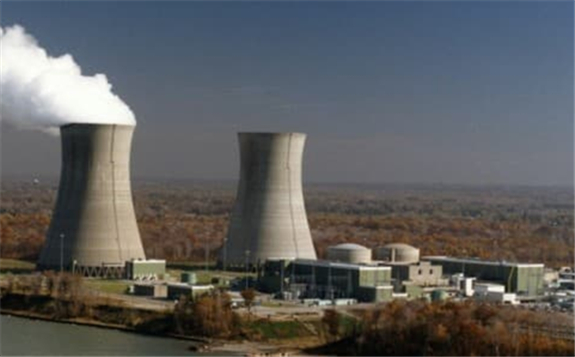2020 will go down in the history of energy as one of the worst examples of the global economy swiftly tanking in almost complete unison, virtually every region has suffered dreadfully from the manifold impacts of coronavirus. If one is to assess the global energy impacts of 2020 it becomes evident that every single type of fuel has declined last year except for renewables and biomass. Almost every single sector of economy – agriculture, industrial, commercial and residential – has seen its aggregate consumption drop, only the petrochemicals industry was able to pull off a meagre 1% year-on-year increase. Yet of all types of energy nuclear power has arguably suffered the most, virtually lacking any success story that could mitigate the overall decadence of 2020. Oil or gas had likewise experienced all sorts of hardships throughout 2020, however, in some regions or industry segments they’ve managed to increase their footing. Finding stories of growth, generally speaking, is quite difficult considering that consumption of primary energy has dropped on every single continent last year, no major region was spared of the devastating effects of COVID-19. Perhaps surprisingly, despite having the most COVID cases in absolute terms North America was not the worst-hit continent, seeing its overall intake drop 9% year-on-year, Europe (and particularly Western Europe) witnessed an even more severe decline of 12% from its 2019 numbers. In nominal terms, European energy consumption stood at 1.77Btoe in 2019 and it had dropped to 1.56Btoe last year.

The general horror story notwithstanding, there are some positive stories to tell. For instance, looking at the statistics of power generation of different regions, one can notice that the utilization of natural gas has gone up in North America, Central Europe and Northeast Asia, reflecting the cheap price thereof during 2020. On the flipside of gas’ power generation ascent, the usage of crude oil in power generation has further subsided across all regions except for Africa, the collective effort being spearheaded by Europe including Russia and North America. For the second time in the 21st century and the first time since 2008 global oil demand has dropped on an annual basis – in absolute numbers (8.8mbpd) the decline was the worst in history. Interestingly, oil’s demand slump was much more marked than that of natural gas or coal, the demand for which has decreased by 7% year-on-year.
Source: data compiled by author, author’s estimate for 2021. Coal has also had a horrible time lately. It continued its downfall in North America (NA) where coal-fired generation plummeted by another 250 TWh to 900 TWh, meaning that for the first time in the 21st century coal in NA has dropped below nuclear. The last bastion of coal is in Southeast Asia which remains both a massive producer and an avid consumer, though coal demand in that region has largely stagnated in 2020 as there was barely any space to edge higher. The only major region which did see an uptick in coal consumption is the Middle East where cheap and abundant coal have provided a much welcome source for power generation. To provide just one example, in April 2020 a total of 0.85 million tons of coal was imported to Middle Eastern nations (predominantly UAE), roughly equivalent to 3 months’ aggregate in 2019 terms.
If one is to consider the 2010-2020 timeframe, nuclear energy seems to be the largest loser from all fuel types, its decline (-0.4% annually) surpassing even that of coal. In 2020 alone, nuclear energy production fell a precipitous 400 TWh year-on-year, moving from stagnation to outright decline in Europe and the Americas and bringing Asia’s capacity ramp-up to a sudden halt. The 2011 Fukushima Daiichi disaster has both directly and indirectly impacted this downfall – it has scrapped the totality of Japan’s nuclear output from the global map and has damaged nuclear energy’s reputation to the extent that most advanced economies consider quitting it altogether, despite being a completely non-polluting technology (and thus nuclear could have been greatly conducive to them reaching their respective emission-curbing targets).
Europe has seen the largest decline in both absolute and relative terms (Western Europe dropped a whopping 15% from 2019, by some 300 Terawatt-hours) when it comes to the usage of nuclear energy. This was largely boosted by Europe’s decarbonization efforts, aimed at rendering the EU’s economy climate-neutral by 2050. Europe already makes up 61% of the world’s decommissioned reactors and with Germany, Spain and Belgium phasing out their plants by 2023, 2025 and 2035, respectively, that share is likely to increase even further. This need not be a wise strategy – in fact Germany is starting to feel the consequences of a rushed phase-out, seeing its power exports halve in 2020. Concurrently, imports into Germany (mostly nuclear from France) have grown by almost 40% year-on-year to 33.6 TWh.
The upcoming decade, however, would most probably augur in a mini-renaissance for nuclear energy for several reasons. First, two nations have commissioned newly-built nuclear plants (Belarus and United Arab Emirates) late 2020 and once the global economy bounces back from the COVID-induced slump will see their nuclear output gradually increase over the 2021/2022 timeframe.
Second, Japan is expected to bring back some nuclear capacities, with at least 5 safety-upgraded reactors slated for recommissioning by 2025. Third, the mid-2020s will see another inflow of nuclear capacities in the Middle Eastern region and Southern Asia – Turkey’s Akkuyu and Egypt’s El Dabaa will both add 4.5GW of capacity to the global aggregate, Bangladesh’s Rooppur another 2.2 GW. Fourth, China and India will commission at least 20 new reactors over the course of the next 9 years, holding true to their reputation of main nuclear energy enthusiasts.
This article is reproduced at oilprice.com







